The John R. Van Derlip Fund and the Thomas Barlow Walker Foundation Jade Collection at MIA
Wine Cup, 12th-13th century. White nephrite with yellow-brown markings, 5.72 x 16.51 cm. Minneapolis Institute of Art, The John R. Van Derlip Fund and Gift of the Thomas Barlow Walker Foundation, 92.103.1.
This rhyton, carved in the shape of a rhinoceros-horn cup, is decorated with dragons in both low and high relief. Rhino horn, like jade itself, was expensive and exotic. It became popular material for decorative carving as early as the Song dynasty (11th-12th century) and remained so through the nineteenth century. This vessel reflects the antiquarian taste that developed among the scholar classes at the Sung court and continued through Yuan (14th century) and early Ming (15th century). The dragon decor here derived from the ancient Zhou style (6th century b.c.) of bronze ornamentation. Scholars of Song greatly revered their own antiquity and took delight in commissioning and collecting objects that recalled the shapes and decorations of the Bronze Age.
Rhyton, 13th century. Grayish white nephrite with brown markings, 13.34 cm. Minneapolis Institute of Art, The John R. Van Derlip Fund and Gift of the Thomas Barlow Walker Foundation, 92.103.2.
Rhytons, cups borne in the mouths of animals, represent an ancient vessel form imported from the Western classical world during the Tang dynasty (7th-10th century). In China, the rhyton shape became more complex, with dragonlike animals often forming a handle. Another characteristic is the elaborate use of surface ornament. Most of the low-relief motifs on this cup derive from the ancient bronze decor. The vessels display an eclectic mix of "C-scrolls," "monster-masks," and lizardlike dragons that are loosely linked to the decor on the ceremonial vessels of bronze age China. Although the rhyton shape and this particular combination of decorative motifs never occurred in ancient vessels, the evocation of antiquity found in a piece like this had immense appeal within Song dynasty intellectual circles of the twelfth and thirteen centuries, when antiquarian studies were in vogue
Goose, 16th century. Gray-green nephrite with brown markings, 14.61 x 19.05 cm. Minneapolis Institute of Art, The John R. Van Derlip Fund and Gift of the Thomas Barlow Walker Foundation, 92.103.6.
Auspicious animals carved in the round, often following the contours of the jade pebble from which they were formed, were extremely popular during the Ming dynasty (1368-1644). This image of a goose grasping a lotus flower is remarkable for its size, as well as for the colors of the stone. Although the surface is finely worked in meticulous detail, there remains a strong sense of the Ming preference for natural, organic shapes and an understated carving technique. Pieces such as this, popular since the Tang dynasty (618-906), were displayed as decorative objects. Impressive in both size and color, this carving would have attracted attention in any jade cabinet.
Brush Washer, 16th-17th century. Pale green nephrite with brown markings, 5.08 x 26.67 cm. Minneapolis Institute of Art, The John R. Van Derlip Fund and Gift of the Thomas Barlow Walker Foundation, 92.103.5.
Vessels distinguished by soft, natural forms and high relief carvings are characteristic of the Ming period (1368-1644). Waterpots, brush holders, and other necessary utensils of the scholar's table often took the form of a lotus, citrus fruit, or as here, ling-chih, an auspicious fungus meant to prolong life. Plants and animals symbolic of good fortune, long used as decorative themes in Chinese art, were immensely popular during the Ming dynasty. This vessel has two water receptacles; since gradated tones of ink are used in Chinese painting and calligraphy, a variety of containers are necessary to wash brushes and dilute ink explaining the double bowl in this washer.
Bowl, 17th century. Light brown nephrite intentionally burned darker, 7.94 x 24.13 cm. Minneapolis Institute of Art, 92.103.4.
Pillow, 17th-18th century. Greenish-white nephrite, 11.43 x 22.23 cm. Minneapolis Institute of Art, The John R. Van Derlip Fund and Gift of the Thomas Barlow Walker Foundation, 92.103.8.
This pillow is carved in the form of a crouching boy holding a bird in his left hand. Hard pillows, usually made of ceramic, were common in China and several pottery examples in the form of children—hopeful symbols of luck in Chinese culture—have survived from Song times (960-1280). Pillows of jade, however, are extremely rare, and given the precious nature of the material, this piece probably was a decorative object intended for display rather than use.
A Gathering of Lohans, 17th-18th century. Grayish white nephrite, 12.7 x 16.51 cm. Minneapolis Institute of Art, The John R. Van Derlip Fund and Gift of the Thomas Barlow Walker Foundation, 92.103.3.
Buddhist themes in jade are relatively rare, and this carved boulder is especially unusual in the way it depicts a group activity within an imaginary setting. The subject is the eighteen lohans, shown here with their attendants in a variety of activities. Most are seen conversing in small groups. One rides a tiger, an animal strongly associated with Buddhism, while another cavorts with dragons in the clouds. Cloud patterns above, waves below, and tree and rock formations at either end suggest principal elements of heaven and earth. Lohans are enlightened saintly men. Eccentric and reclusive in lifestyle, they nevertheless signify the meditative, nonmaterial values of Buddhism and they were a favorite theme in religious paintings from the Song dynasty onward.
Traveling in Autumn Mountains, 17th-18th century. Grayish white nephrite with brown markings, 20.96 cm. Minneapolis Institute of Art, The John R. Van Derlip Fund and Gift of the Thomas Barlow Walker Foundation, 92.103.15.
Covered Vase, 18th century. White and brown jade in vertical strata, 29.53 cm. Minneapolis Institute of Art, The John R. Van Derlip Fund and Gift of the Thomas Barlow Walker Foundation, 92.103.7a,b.
This vase is considered one of the most striking examples of two-color jade in existence. The artist has used the natural colors of the vertical strata to great advantage in depicting the paired dragons and the circular shou, or longevity, symbol that appears in brown against the white background. The rear of the vessel, though carved with identical motifs, is entirely white. The practice of highlighting aspects of a work by carving in accordance with existing color variations was already prevalent by the Song dynasty (960-1280). The technical mastery of Qing artisans and the greater variety of jade available allowed them to produce spectacular objects like this. Keeping with eighteenth century taste, the vessel shape in this instance is vaguely antiquated. Although based on a type of ancient storage jar, this vase presents the stylized and decorative paired dragons, animal masks and meander patterns in a way quite different from the bronzes of the past that it emulates.
Pleasure Boat, 18th century. White jadeite, 27.94 cm. Minneapolis Institute of Art, The John R. Van Derlip Fund and Gift of the Thomas Barlow Walker Foundation, 92.103.10a-f.
This finely detailed pleasure boat is carved in perfect unison with its rosewood base, which captures the water flowers and aquatic birds and crustaceans of the lotus pond on which the craft is meant to sail. The great pleasure gardens of the Qing dynasty, such as the Summer Palace in Beijing, included extensive planted water courses that accommodated the boating parties of the aristocracy. This exquisite carving shows a group of boaters complete with potted plants and wicker picnic hampers. With its aristocratic theme, flawless white nephrite, and superb craftsmanship, it epitomizes the decorative tastes of the 1700s. The inscription carved along the front of the boat, Qianlong yuwan (For the amusement of the emperor Qianlong), indicates that the boat was created in an imperial workshop.
Water coupe, 18th-19th century. White nephrite with green jade, 11.43 cm. Minneapolis Institute of Art, The John R. Van Derlip Fund and Gift of the Thomas Barlow Walker Foundation, 92.103.20a-c.
Important pieces of jade traditionally were fitted with display stands when they were made. Here, realistic lotus blossoms and pods of white jade combine harmoniously with their green, leafy support of carved and tinted ivory. The green jade frog stopper adds a bit of humor to the total composition. The lotus, although long a Buddhist symbol of spiritual purity, is exploited here for its decorative potential. The carving reflects the late eighteenth and nineteenth century aristocratic taste for realistically carved subject matter and pure, bright colors. The combination of jade with other precious material such as ivory, gold or other hardstones became increasingly popular as the nineteenth century progressed and collectors vied to display their wealth.
Jades for the Scholar’s Table, 18th-19th century. Nephrite (jade), 6.35 x 10.8 cm. Minneapolis Institute of Art, The John R. Van Derlip Fund and Gift of the Thomas Barlow Walker Foundation, 92.103.11.
Small jade vessels carved like ancient ritual vessels were favorite objects in the scholar's study. The Gui and Liting forms shown here were the most commonly imitated shapes during the Ming dynasty. These small bowls may have served as incense burners or water holders for the scholar's table. Their archaic shapes and decoration reflect the literati's interest in collecting and studying ancient Chinese art and literature.
Covered Vase, 18th-19th century. White jadeite, 20.32 cm. Minneapolis Institute of Art, The John R. Van Derlip Fund and Gift of the Thomas Barlow Walker Foundation, 92.103.19a,b.
This exquisite vase consists of a large lotus flower delicately supported by stems and leaves carved in the full round. As with many jade objects of this era, the wooden stand relates both in theme and style to the stone it supports. This work vividly demonstrates the technical virtuosity and artistry achieved in jade carving during the eighteenth and nineteenth centuries. As more showy, brightly colored jadeite was imported from Burma, a penchant for elaborately worked carvings developed. Despite the incredible hardness of jade and the enormous patience required to fashion it, the maker of this piece has created a delicate rhythm of plant forms with flawless artistry.
Covered Incense Burner, late 18th-early 19th century. White jadeite, 22.86 x 30.48 cm. Minneapolis Institute of Art, The John R. Van Derlip Fund and Gift of the Thomas Barlow Walker Foundation, 92.103.24a,b.
This white tripod is of the highest standard in terms of pure color. White seems to have been the prized color in jade throughout Chinese history, but it reached a height in popularity during the eighteenth and nineteenth centuries. This vessel has an exceptionally luminescent quality, and in view of this its maker has taken care not to clutter the form with detailed ornament, but rather provide a simple, polished surface that under strong light is totally dazzling. The tripod shape here is a vague reference to the ancient ceremonial bronzes of the early Zhou. This form, originally used in ancestor rites, was eventually revived and simplified to be used as Buddhist censers during the later dynasties of the Ming and Qing. Like the other magnificent jade burners in the Walker collection, however, this object was mainly cherished for the innate beauty of the stone itself.
Champion's Vase (Ying-hsiung), 18th-19th century. Pale gray-green nephrite, 19.05 cm. Minneapolis Institute of Art, The John R. Van Derlip Fund and Gift of the Thomas Barlow Walker Foundation, 92.103.16a,b.
This unusual vessel, comprised of twin cylinders united by a phoenix surmounting a winged lion, is in a traditional shape that can be traced back over two thousand years. The vessel nowadays is commonly called a "champion's" or "hero's" vase, a pun on the words ying-hsiung, which the Chinese use to describe the vase. Numerous jade examples of this form survive from the late Sung, Yüan and Ming dynasties (13th-17th century). Reverence for past forms is typically associated with China's educated elite, and this vase demonstrates the strong revival tendencies of the Chinese artisan. Used as a decorative object, this exquisitely detailed champion's vase conveys a sense of history, tradition and cultural continuity that would have appealed to a learned owner.
Covered Vase, 19th century. White jadeite, 21.59 cm. Minneapolis Institute of Art, The John R. Van Derlip Fund and Gift of the Thomas Barlow Walker Foundation, 92.103.18a,b.
During the late Qing period, jade was used more than ever for decorative purposes. As technical boundaries were challenged, the treatment of form became increasingly complex. By the late eighteenth and ninteenth centuries, virtuoso carving was much admired, and elaborately carved works like this vase gained in popularity with the aristocracy. The vessel consists of two swans grasping aquatic plants in their bills; ring handles hang at each side, and an openwork cover decorated with reticulated floral motifs is attached to the body by several links of chain. Remarkably, all this is carved from a single block of white jadeite. This piece clearly aims to delight through the sheer virtuosity of its carving rather than the beauty of its form or any symbolic references to Chinese antiquity. Typically, the more colorful and showy pieces of jadeite were used for this type of work, which became a hallmark of the early nineteenth century.
Amitabha, 19th century. White and mottled green nephrite, 33.34 cm. Minneapolis Institute of Art, The John R. Van Derlip Fund and Gift of the Thomas Barlow Walker Foundation, 92.103.14a,b.
Religious images in jade are relatively rare, and this figure of the Buddha Amitabha in contemplation makes an unusual use of contrasting colors of jade. When the Manchus overthrew the Ming in 1644, they adopted the Tibetan style of Buddhism as the official religion. During the eighteenth century especially, a great deal of state funding was directed toward temple construction and monastic renovation. This image was not likely commissioned for a temple, but rather a domestic altar for the court. The Buddha is shown here in dhyana mudra, the pose of deep contemplation which led to his enlightenment. The figure is seated on a stylized lotus pedestal, a Buddhist symbol for spiritual purity. The enframement in green jade is an open nimbus which takes the form of a Tibetan-style stupa. The inscription is in praise of Amitabha, the Buddha of Infinite Light, and states that the jade was commissioned by the court.
Covered Tripod, 19th century. Light green jadeite with white and green markings, 26.67 cm. Minneapolis Institute of Art, The John R. Van Derlip Fund and Gift of the Thomas Barlow Walker Foundation, 92.103.22a,b.
An exceptionally large and spectacular example of bright green (feicui) jadeite, this vessel is one of the highlights of the T. B. Walker collection. The artist has contrasted large areas of smooth undecorated surface with smaller areas of superbly detailed carving. The Buddhist lions surmounting the lid and animal masks on the handles and legs were symbolic guardians, most frequently seen flanking the entrances of important Ming and Qing buildings. Like white jade, feicui or "kingfisher feather blue" was a highly prized color during the nineteenth century and continues to be so today. The term aptly describes the bright and luminous turquoise-green jadeite, of which this imperial vessel is one of the finest examples known.
Many decorative art objects were sold from the imperial collection following the fall of the Qing dynasty in 1912. The last emperor, Xuantong, and his retainers, though stripped of power, were allowed to keep the imperial treasures. Records show that T. B. Walker purchased this piece in 1914.
Jade Boulder, 19th century. Dark green nephrite, 16.51 cm. Minneapolis Institute of Art, The John R. Van Derlip Fund and Gift of the Thomas Barlow Walker Foundation, 92.103.25.
Ironically, neither type of jade, nephrite nor jadeite, is indigenous to central China. All these precious materials had to be transported great distances from Chinese Turkestan in the extreme west or, in the case of jadeite, from northern Burma. This undoubtedly greatly enhanced the value and mystique with which the Chinese have always imbued this natural substance. The boulder shown here is typical of the type of raw jade, indistinguishable from most other rocks, found in the riverbed regions of Turkestan. The outer rinds of the stone has been ground away to reveal the color of the mineral beneath. It was thus prepared to be auctioned off to representatives of the jade-carving workshops, who bid according to the color, size and granular consistency of each piece.
Incense Burner, 19th century. Green jadeite, 17.46 cm. Minneapolis Institute of Art, The John R. Van Derlip Fund and Gift of the Thomas Barlow Walker Foundation, 92.103.21a,b.
Vessel in the shape of a bronze gui, 19th century. Nephrite jade, 7.62 × 15.88 × 8.89 cm. Minneapolis Institute of Art, The John R. Van Derlip Fund and Gift of the Thomas Barlow Walker Foundation, 92.103.12.
Small jade vessels carved like ancient ritual vessels were favorite objects in the scholar's study. The Gui and liting forms shown here were the most commonly imitated shapes during the Ming dynasty. These small bowls may have served as incense burners or water holders for the scholar's table. Their archaic shapes and decoration reflect the literati's interest in collecting and studying ancient Chinese art and literature.
Covered Incense Burner, 19th century. Greenish-white nephrite, 19.69 cm. Minneapolis Institute of Art, The John R. Van Derlip Fund and Gift of the Thomas Barlow Walker Foundation, 92.103.17a,b.
This elaborately carved incense burner is a classic example of "Mughal" or "Indian-style" jade carving. Muslim merchants from India often acted as middlemen in the jade trade between Turkestan, Burma and China. Certain types of carved jade and silver vessels manufactured in India and popular in the Mughal courts found their way to China. The Indian floral and tendril motifs, along with a preference for openwork and thinly walled vessels influenced Chinese carvers, who responded by incorporating these motifs and techniques into some of their own work, like this censer. Although it takes the shape of an ancient Chinese bronze vessel called a tui and a coiled dragon surmounts the lid, the extensive use of chrysanthemum motifs, the thin walls and the elaborate pierce-work of the cover evoke the "Indian-style."
Incense burner, 19th century. Blue jadeite, 19.05 × 17.78 × 12.7 cm. Minneapolis Institute of Art, The John R. Van Derlip Fund and Gift of the Thomas Barlow Walker Foundation, 92.103.23a,b.
The intricate design and extravagant treatment of this incense burner, in archaic ding-cauldron form, demonstrates the fashion for archaic artworks prevalent during the 1700s and the virtuosity of mid–Qing workmanship. The domed lid is embellished with three movable rings; its openwork knob is in the shape of a dragon. Two “ears” connected at the rim and shoulder and upper side of the burner are carved as animal masks, each holding a ring in its C-shaped body. The main body of the censer is supported on three animal feet, each modeled at the top with an animal head. Exceptional by virtue of its extremely rare blue color, this tripod censer reflects the trend toward brighter hues of jade during the 19th century. The importation of Burmese jadeite beginning in the late 17th century afforded Chinese craftsmen a far greater range of pure, bright colors than had previously been available in central Asian nephrite.

/https%3A%2F%2Fprofilepics.canalblog.com%2Fprofilepics%2F1%2F0%2F100183.jpg)
/https%3A%2F%2Fstorage.canalblog.com%2F03%2F02%2F119589%2F96711876_o.jpg)
/https%3A%2F%2Fstorage.canalblog.com%2F11%2F31%2F119589%2F94773502_o.jpg)
/https%3A%2F%2Fstorage.canalblog.com%2F20%2F83%2F119589%2F94772815_o.jpg)
/https%3A%2F%2Fstorage.canalblog.com%2F26%2F72%2F119589%2F75604929_o.jpg)
/https%3A%2F%2Fstorage.canalblog.com%2F59%2F60%2F119589%2F26458628_o.jpg)






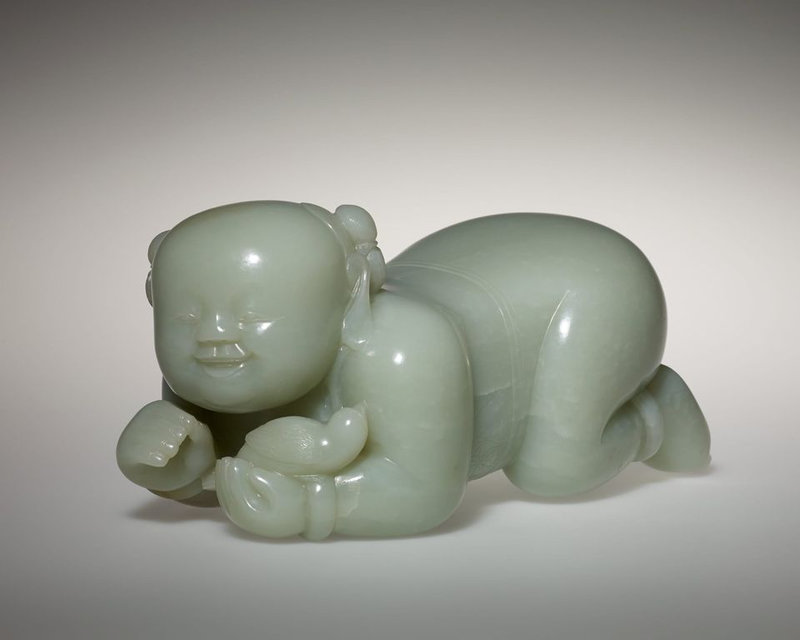
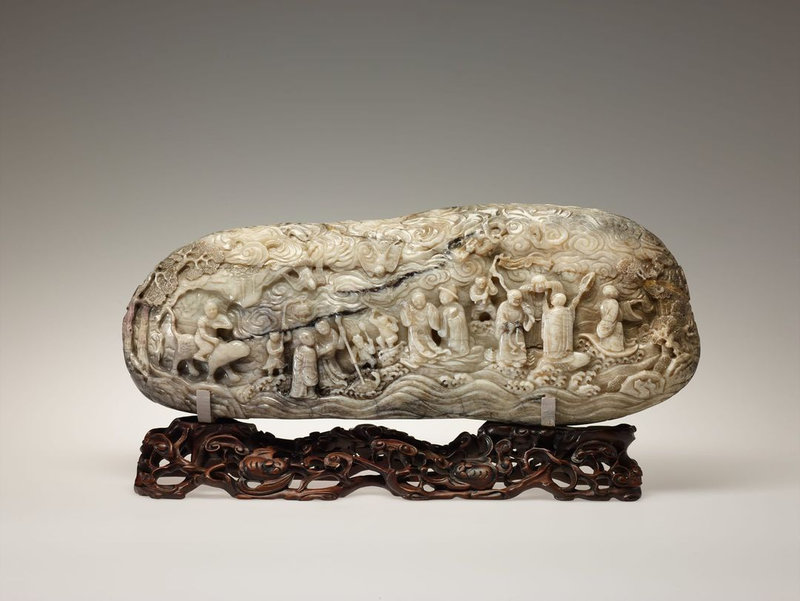





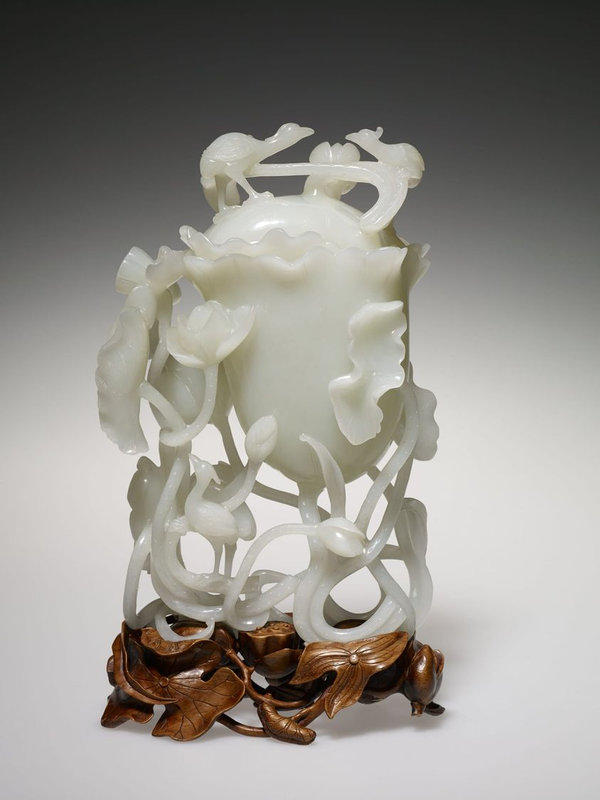

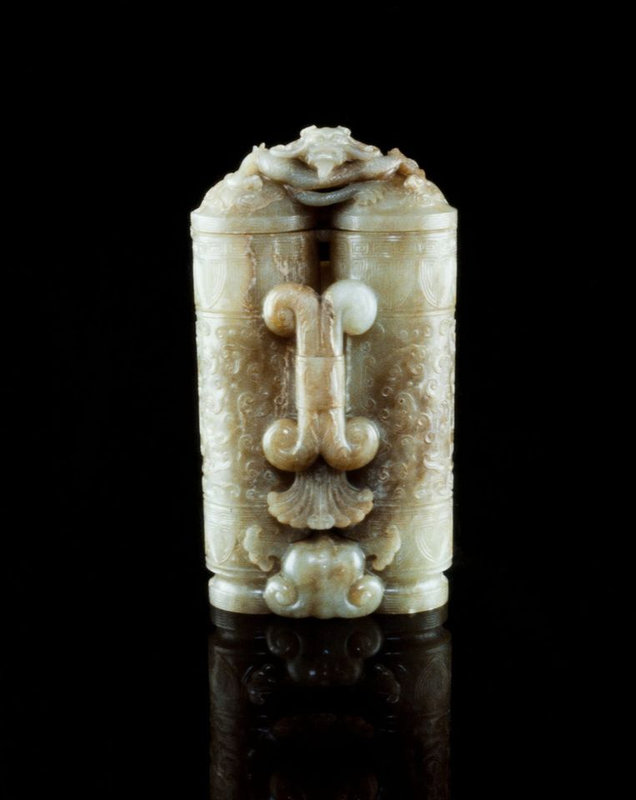






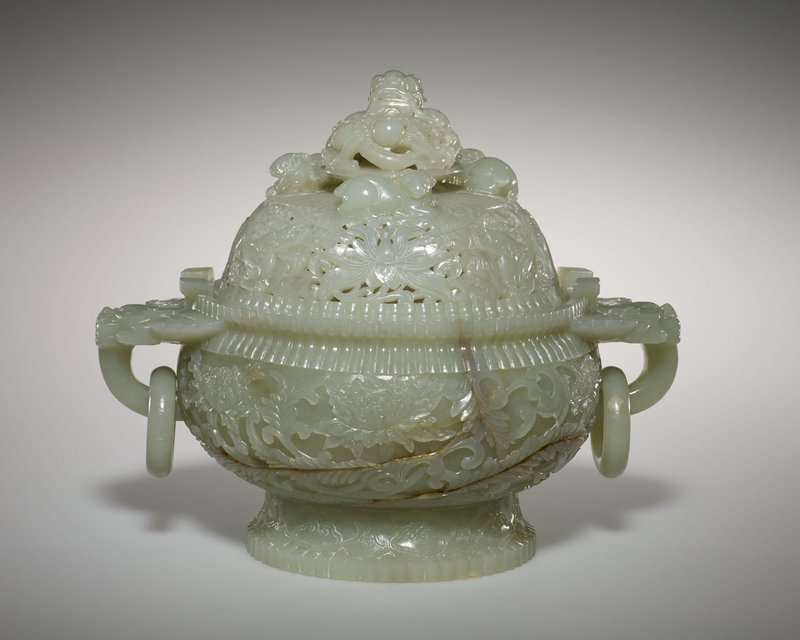
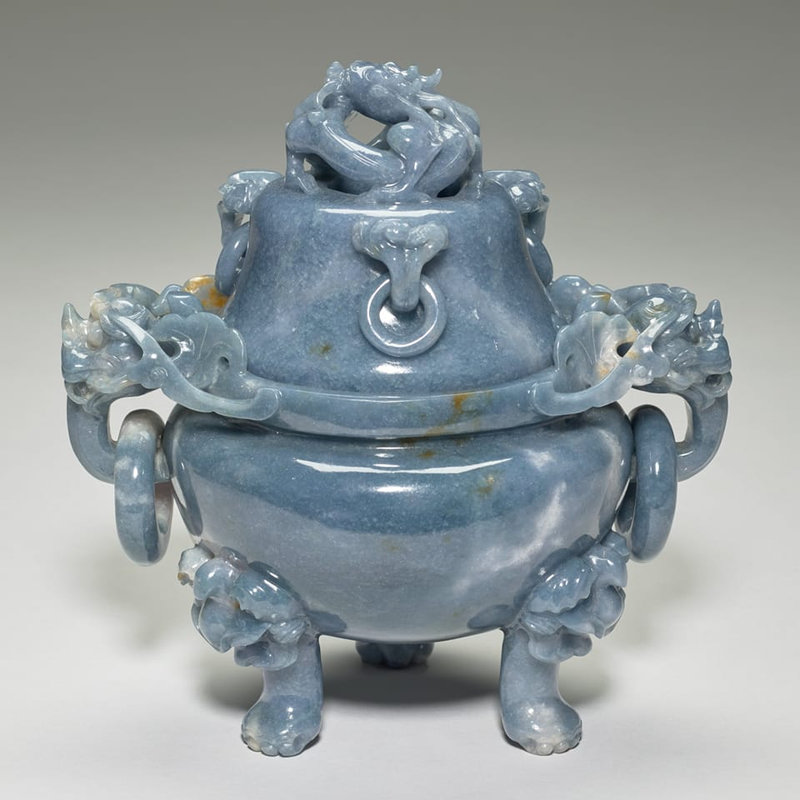



/image%2F1371349%2F20240309%2Fob_325ca4_getcollectionimage-3.jpg)
/http%3A%2F%2Fstorage.canalblog.com%2F31%2F47%2F119589%2F129360608_o.jpg)
/http%3A%2F%2Fstorage.canalblog.com%2F05%2F33%2F119589%2F129238125_o.jpg)
/http%3A%2F%2Fstorage.canalblog.com%2F82%2F56%2F119589%2F129048105_o.png)